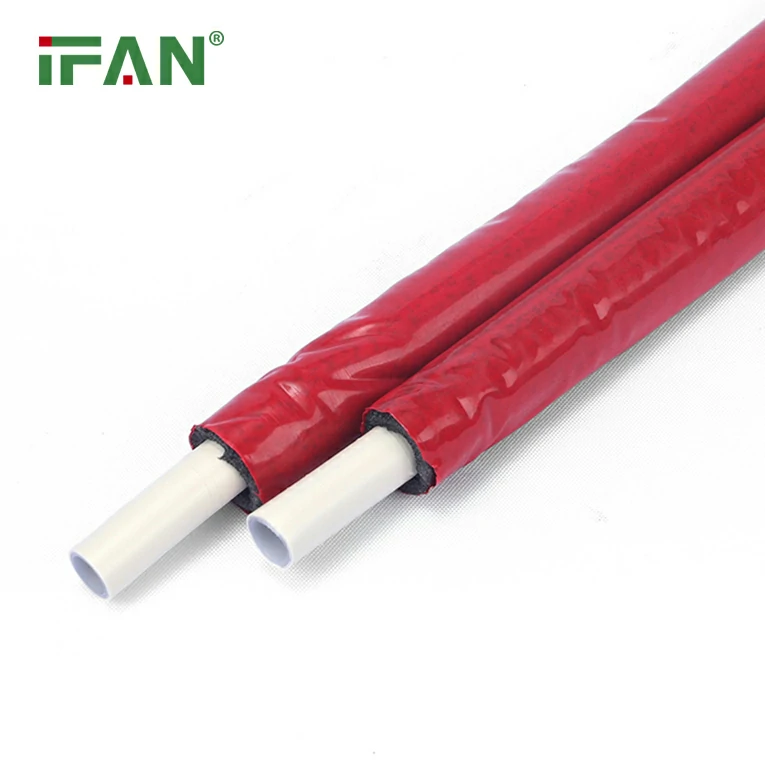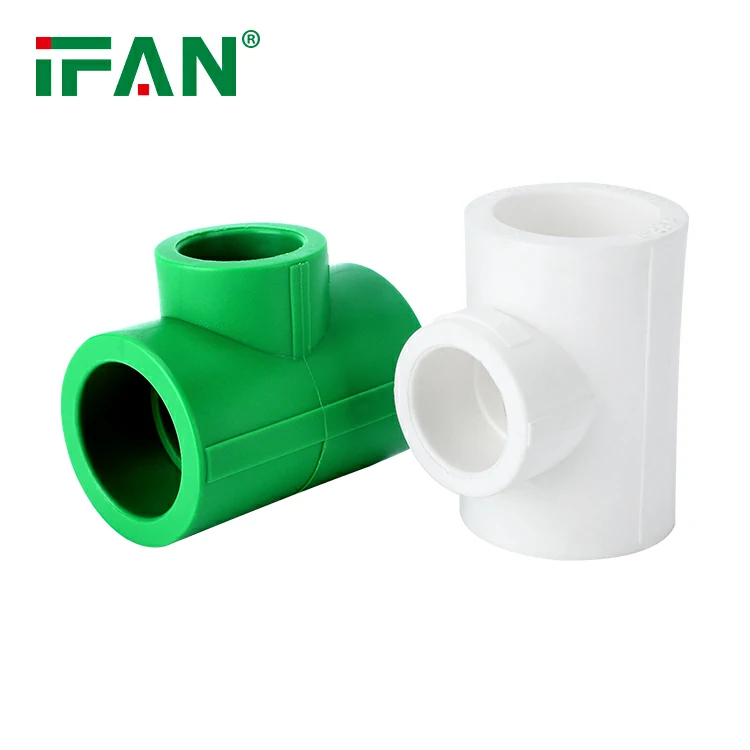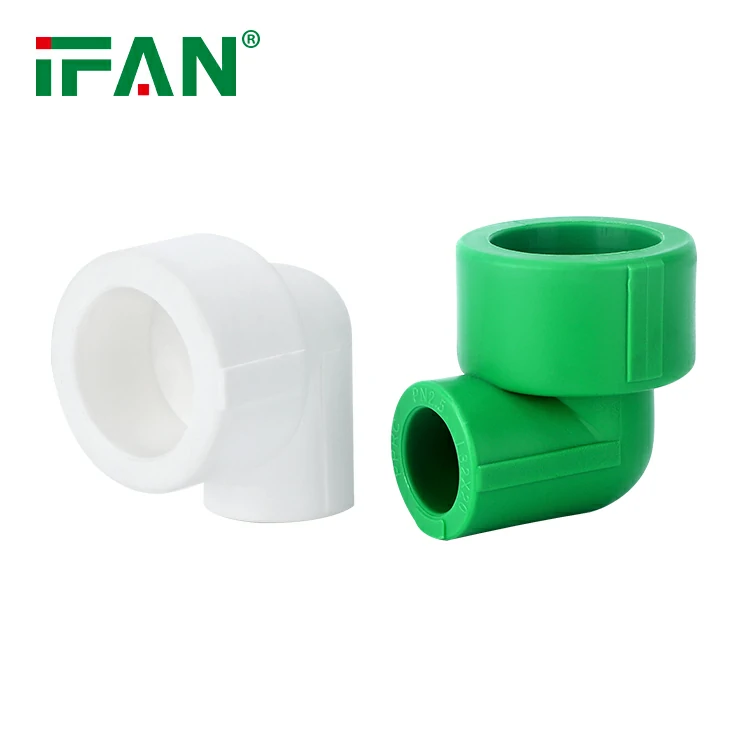Introduction:
In modern plumbing and fluid transport systems, pipes play an essential role in the efficient delivery of fluids. When it comes to choosing materials for fluid conveyance, PPR pipes (Polypropylene Random Copolymer pipes) have become a popular option due to their unique physical properties, which offer significant advantages over other types of pipes. Whether used in residential, industrial, or commercial applications, PPR pipes are known for their durability, resistance to corrosion, and excellent flow characteristics.
Although PPR pipes are commonly compared to other materials like PEX pipes, the two materials differ significantly in terms of their physical properties, performance, and applications. This article explores the physical properties of PPR pipes conveying fluid, how these properties affect the performance of fluid transport systems, and why PEX pipes remain a viable alternative in certain scenarios. By the end of this article, you will have a comprehensive understanding of PPR pipes and how they contribute to more efficient and durable plumbing and fluid conveyance systems.

What are PPR Pipes?
PPR pipes are made from polypropylene, a thermoplastic polymer, that is specifically formulated for the transportation of fluids. These pipes are primarily used for hot and cold water systems, industrial fluid transport, and other applications that require a durable and corrosion-resistant solution. Unlike traditional materials such as steel or copper, PPR pipes are lightweight, easy to install, and offer exceptional longevity. The random copolymerization of polypropylene in PPR pipes gives them an excellent balance of strength, flexibility, and resistance to heat and chemicals.
The PPR pipe material is non-toxic, making it a safe choice for potable water systems. It is also highly resistant to scaling and the formation of biofilms, which are common problems in metal-based pipe systems.
Physical Properties of PPR Pipes
The physical properties of PPR pipes are what make them highly efficient for conveying fluids. These properties include thermal resistance, pressure endurance, chemical stability, flexibility, and low friction, which are critical in ensuring the reliable and safe transport of fluids. Here is an in-depth look at the key physical properties of PPR pipes:
1. Thermal Resistance
One of the standout features of PPR pipes is their ability to withstand high temperatures. PPR pipes can handle temperatures ranging from -10°C to 95°C (14°F to 203°F) without degrading or losing their structural integrity. This makes them an ideal choice for both hot and cold water systems. The PPR pipe’s high thermal resistance allows it to perform well even in environments that experience temperature fluctuations, such as in industrial settings or heating systems.
While PEX pipes are also known for their ability to handle high temperatures, PPR pipes typically offer superior resistance to thermal degradation, making them suitable for long-term applications under heat stress. In addition, PPR pipes have a low coefficient of thermal expansion, which means they are less likely to expand or contract significantly with changes in temperature.
2. Pressure Endurance
Pressure endurance is another critical physical property of PPR pipes, especially when it comes to fluid transport systems that require the handling of high-pressure liquids. PPR pipes are designed to withstand high internal pressures without rupturing or deforming. The pressure rating of a PPR pipe is determined by its diameter, wall thickness, and the type of fluid being conveyed.
Typically, PPR pipes can withstand pressure up to 20 bar (290 psi), making them suitable for a wide range of plumbing and fluid transport applications. The pressure resistance is particularly advantageous in industrial settings where high-pressure systems are common. Compared to PEX pipes, which are also known for their ability to handle pressure, PPR pipes generally offer better long-term performance in high-pressure systems, particularly where exposure to heat is also a factor.
3. Chemical Resistance
PPR pipes are highly resistant to a wide variety of chemicals, including acids, alkalis, and salts. This makes them an ideal choice for industries where chemical exposure is a concern, such as in chemical manufacturing, pharmaceuticals, and food processing. The chemical resistance of PPR pipes ensures that the pipe material will not degrade or corrode when exposed to aggressive fluids, resulting in a longer service life and reduced maintenance costs.
In comparison to PEX pipes, which are generally resistant to most chemicals but may degrade in the presence of certain substances, PPR pipes have superior chemical resistance, particularly when dealing with more aggressive substances.
4. Flexibility and Impact Resistance
While PPR pipes are relatively rigid compared to materials like PEX pipes, they still offer a certain level of flexibility that allows them to bend and curve in some applications. This flexibility helps PPR pipes to adapt to complex installations without the need for additional fittings or joints. The flexibility of PPR pipes also reduces the risk of pipe cracking in freezing temperatures or when subjected to mechanical stress.
Impact resistance is another key advantage of PPR pipes. These pipes are designed to withstand external forces such as impact, bending, or vibration. In environments where the piping system might be subjected to physical stress, PPR pipes provide an added layer of protection against damage.
5. Low Friction and High Flow Capacity
The internal surface of PPR pipes is smooth, which significantly reduces friction and ensures that fluids flow freely and efficiently through the system. This property is especially important in systems where fluid transport is critical, such as in water supply systems, heating systems, and industrial fluid transport pipelines.
The low friction factor of PPR pipes means that less energy is required to push fluid through the pipes, leading to improved flow efficiency and reduced energy consumption. The smooth inner surface also reduces the risk of blockages, scaling, or the buildup of biofilms, which can degrade the system’s performance over time.
Compared to PEX pipes, PPR pipes tend to offer slightly better flow rates due to their smooth surface, which reduces resistance more effectively. This can result in more efficient fluid transport, particularly in large-scale systems.
6. Lightweight and Easy to Install
PPR pipes are lightweight, which makes them easier to handle, transport, and install compared to traditional materials like steel or copper. This property reduces the labor costs associated with installation and minimizes the physical strain on workers. PPR pipes can be joined using heat fusion techniques, which do not require additional fittings or adhesives. This results in fewer joints and a simpler installation process.
In comparison to PEX pipes, which are also lightweight and easy to install, PPR pipes require more specialized welding equipment for heat fusion. However, the durability and longevity of PPR pipes often make the initial investment worthwhile for larger-scale projects.
Applications of PPR Pipes
Given their unique physical properties, PPR pipes are widely used in various industries and applications, including:
- Hot and Cold Water Systems: PPR pipes are commonly used for domestic water supply systems due to their thermal resistance, corrosion resistance, and ability to handle both hot and cold water.
- Industrial Fluid Transport: PPR pipes are often used in industries that require the safe transport of chemicals, acids, or other fluids. Their excellent chemical resistance makes them ideal for such applications.
- Heating Systems: PPR pipes are often used in underfloor heating systems due to their resistance to heat and pressure, which ensures a reliable and long-lasting heating solution.
- Food and Beverage Processing: In the food and beverage industry, PPR pipes are used for fluid transport because they do not impart harmful substances into the liquids they carry.
Conclusion
The PPR pipe is an essential component in fluid transport systems, offering an excellent combination of physical properties that contribute to its widespread use in plumbing and industrial applications. With its resistance to heat, pressure, chemicals, and impact, as well as its smooth internal surface that promotes efficient fluid flow, PPR pipes offer significant advantages over traditional materials like copper and steel. Additionally, their ease of installation and long lifespan make them a cost-effective choice for both residential and commercial plumbing systems.
When comparing PPR pipes with PEX pipes, both materials offer advantages in specific applications, and the choice ultimately depends on factors like fluid type, temperature, and pressure requirements. However, for those in need of a robust, chemical-resistant, and high-performance solution, PPR pipes are an excellent option for conveying fluids with efficiency and reliability.
FAQ
1. What is the difference between PPR pipes and PEX pipes?
PPR pipes are made from polypropylene and are known for their resistance to heat, pressure, and chemicals, making them ideal for industrial and residential fluid transport systems. PEX pipes, made from cross-linked polyethylene, are more flexible and are commonly used for residential plumbing, including hot and cold water supply systems.
2. Can PPR pipes be used for both hot and cold water systems?
Yes, PPR pipes are highly resistant to temperature variations and can be used for both hot and cold water systems. They are designed to handle temperatures up to 95°C (203°F) without degradation.
3. Are PPR pipes resistant to chemicals?
Yes, PPR pipes offer excellent chemical resistance, making them suitable for industrial applications where aggressive chemicals are transported. They are resistant to acids, alkalis, and salts, among other substances.
4. How long do PPR pipes last?
PPR pipes are known for their durability and long lifespan, typically lasting over 50 years with proper installation and maintenance. They are resistant to corrosion and scaling, which contributes to their long service life.
**5
. Are PPR pipes easy to install?**
Yes, PPR pipes are lightweight and easy to install, often requiring heat fusion welding. This eliminates the need for additional fittings and adhesives, making the installation process simpler and faster.





